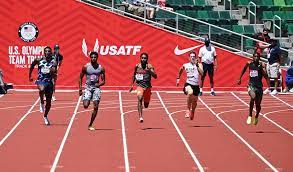Chapter 5:Arithmetic Progressions
Class 10 Case based problem of Chapter 5 A.P. 1
Class 10 Case based problem of Chapter 5 A.P. 2
Case Based :4
Sumit’s father had to undergo knee surgery as he was suffering from lot of pain and unable to walk properly. The physiotheropist asked him to return to his jogging program slowly. He suggested jogging for 10 minutes daily for the first week and thereafter increase the jogging time by 6 minutes.

(A) What will be his jogging time after 8 weeks ?
(a) 46 minutes (b) 52 minutes
(c) 58 minutes (d) 64 minutes
(B) In which week will his jogging time be 70 minutes per day ?
(a) ![]() week (b)
week (b) ![]() week
week
(c) ![]() week (d)
week (d) ![]() week
week
(C) Which of the following cannot be the ![]() term of an A.P. ?
term of an A.P. ?
(a) 5 + n (b) 2n + 3
(c) 5n – 4 (d) ![]()
(D) The value of k so that ![]() are the three consecutive terms of an A.P. is:
are the three consecutive terms of an A.P. is:
(a) 0 (b) -1
(c) 1 (d) 2
(E) Which term of the A.P. : 53, 48, 43, . . . is the first negative term ?
(a) ![]() (b)
(b) ![]()
(c) ![]() (d)
(d) ![]()
Solution:
(A) Answer (b) 52 minutes
Explanation: A.P. 10, 16, 22, . . .
a = 1, d = 6
![]()
![]()
![]()
![]() minutes
minutes
(B) Answer (c) ![]() week
week
Explanation: ![]() minutes
minutes
![]()
![]()
![]()
![]()
![]()
Jogging time will be 70 minutes = ![]() week
week
(C) Answer (d) ![]() .
.
Explanation: ![]() term of any A.P. can not be in quadratic form
term of any A.P. can not be in quadratic form
Hence, ![]() cannot be the
cannot be the ![]() term of A.P.
term of A.P.
(D) Answer (a) 0
Explanation: Since, ![]() are in A.P.
are in A.P.
So, ![]()
![]()
![]()
![]()
![]()
(E) Answer (b) ![]()
Explanation: A.P. : 53, 48, 43, . . .
a = 53, d = 48 – 53 = -5
Then, ![]()
![]()
![]()
![]()
![]()
![]()
![]()
Hence, n = 12
Therefore, ![]() term of given A.P. is the first negative term.
term of given A.P. is the first negative term.
Case Based : 5
Kaashvi has a piggy bank made of clay when she has been saving part of her pocket money . She saves ₹ 12 in the first month, ₹ 15 in the second month, ₹ 18 in the third month and continues to save in this manner.

(A) Which of the following is true about the monthly saving of Kaashvi ?
(a) It does not form an A.P.
(b) It forms an A.P. with a = 12, d = 3
(c) It forms on A.P. with a = 12, d = 6
(d) It forms an A.P. with a = 12, d = -3
(B) In which month will Kaashvi be able to save ₹ 72 ?
(a) ![]() (b)
(b) ![]()
(c) ![]() (d)
(d) ![]()
(C) How much amount did Kaashvi save in the ![]() month ?
month ?
(a) ₹ 57 (b) ₹ 54
(c) ₹ 51 (d) ₹ 48
(D) The third term of an A.P. is 1 and the sixth term is -11. The ![]() term of the A.P. is :
term of the A.P. is :
(a) -47 (b) -51
(c) -55 (d) -59
(E) The ratio of the ![]() to the
to the ![]() terms of an A.P. is 12 : 5. Then the ratio of its
terms of an A.P. is 12 : 5. Then the ratio of its ![]() to
to ![]() terms is :
terms is :
(a) 3 : 10 (b) 10 : 3
(c) 10 : 5 (d) 3 : 8
Solution:
(A) Answer (b) It forms an A.P. with a = 12, d = 3
Explanation: As the monthly savings of Kaashvi are ₹ 12, 15, 18 . . .
They form an A.P. with a = 12 and d = 3.
(B) Answer (c) ![]()
Explanation: ![]()
![]()
![]()
![]()
![]()
![]()
Therefore, n = 21
(C) Answer (d) ₹ 48
Explanation: ![]()
![]()
![]()
![]()
![]()
Kaashvi will save in ![]() month = ₹ 48
month = ₹ 48
(D) Answer (a) -47
Explanation: Given that, ![]() and
and ![]()
![]() . . . . (i)
. . . . (i)
![]() . . . . . .(ii)
. . . . . .(ii)
subtracting (ii) to (i)
![]()
![]()
![]()
![]()
Putting in equation (i)
![]()
![]()
![]()
![]()
Therefore, ![]()
![]()
![]()
![]()
The ![]() term of A.P. = -47
term of A.P. = -47
(E) Answer (b) 10 : 3
Explanation: Given that ![]()
![]()
![]()
![]()
![]()
![]()
Now,
![]()
![]()
![]()
![]()
![]()
![]()
Hence, Ratio between ![]() and
and ![]() term = 10 : 3
term = 10 : 3
Case Based : 6
Your friend Veer wants to participate in a 200 m race. He can currently run that distance in 51 seconds and with each day of practice. It takes him 2 seconds less. He wants to do in 31 seconds.

(A) Which of the following terms are in A.P. for the given situtation ?
(a) 51, 53, 55 . . . . (b) 51, 49, 47 . . .
(c) -51, -53, -55 . . . (d) 51, 55, 59 . . .
(B) What is the minimum number of days ?
(a) 10 (b) 12
(c) 11 (d) 9
(C) Which of the following term is not in the A.P. of the above given situtation.
(a) 41 (b) 30
(c) 37 (d) 39
(D) If ![]() term of an A.P. is given by
term of an A.P. is given by ![]() , Then common difference of an A.P. is
, Then common difference of an A.P. is
(a) 2 (b) 3
(c) 5 (d) 1
(E) The value of x, for which 2x, x + 10, 3x + 2 are three consecutive terms of an A.P., is :
(a) 6 (b) -6
(c) 18 (d) -18
Solution:
(A) Answer (b) 51, 49, 47 . . . .
(B) Answer (c) 11
Explanation: Given A.P.
51, 49, 47 . . . . 31
a = 51, l = 31, d = -2
We know that
![]()
![]()
![]()
![]()
![]()
The minimum number of days = 11
(C) Answer (b) 30
Explanation: Since, A.P.
51, 49, 47, 45, 43, 41, 39, 37, 35, 33, 31
Every number in the A.P. are odd number and 30 is an even number
Hence, 30 is not any term in the A.P.
(D) Answer (a) 2
Explanation: Given that, n th term of A.P.
![]()
![]()
![]()
Common difference(d) ![]()
![]()
(E) Answer (a) 6
Explanation: Given A.P. 2x, x + 10, 3x + 2
common difference(d) ![]()
![]()
![]()
![]()
![]()
![]()
![]()
Some other Case Based problem
Pair of Linear equations in two variables
Class 10 Case based problem of Chapter 3 Pair of Linear eq 1
Class 10 Case based problem of Chapter 3 Pair of Linear eq 2
Quadratic Equation
Class 10 Case based problem of Chapter 4 quadratic eq 1
Class 10 Case based problem of Chapter 4 Quadratic eq 2